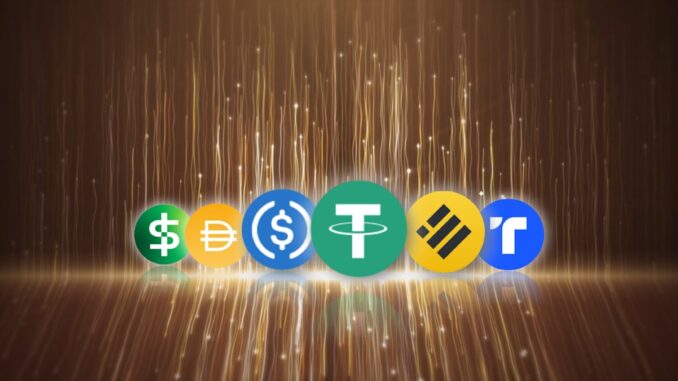
In recent years, stablecoins have emerged as a pivotal component in the cryptocurrency ecosystem, offering a semblance of stability amidst the notorious volatility of digital assets. These cryptocurrencies are pegged to stable assets, typically the U.S. dollar, aiming to provide users with a reliable store of value and a medium for transactions.
The Meteoric Rise of Stablecoins
The allure of stablecoins lies in their promise to combine the benefits of cryptocurrencies—such as fast transactions and low fees—with the stability of traditional fiat currencies. This unique proposition has led to their widespread adoption across various sectors, including decentralized finance (DeFi), remittances, and as a hedge against the volatility of other cryptocurrencies. For instance, during periods of market downturns, investors often flock to stablecoins to preserve capital, underscoring their role as a safe haven in the crypto market.
A notable example is the surge in the use of USD Coin (USDC) during the market turbulence of early 2025. As Bitcoin and Ethereum prices plummeted, USDC’s market capitalization soared, reflecting its growing acceptance among investors seeking stability.
Investor Identification, Introduction, and negotiation.
The Risks Lurking Beneath the Surface
Despite their advantages, stablecoins are not without significant risks. The most pressing concern is the potential for a stablecoin to lose its peg to the underlying asset, a phenomenon known as “de-pegging.” This risk became starkly evident in May 2022 when TerraUSD (UST), an algorithmic stablecoin, collapsed after losing its dollar peg, leading to a market-wide crisis that wiped out billions in value. (en.wikipedia.org)
Another critical issue is the lack of transparency regarding the reserves backing these coins. Many stablecoin issuers have been criticized for not providing sufficient proof that their tokens are fully backed by the claimed assets. This opacity can erode user trust and potentially lead to regulatory scrutiny. (gemini.com)
Regulatory uncertainty also poses a significant challenge. In the United States, the Securities and Exchange Commission (SEC) and the Commodity Futures Trading Commission (CFTC) have engaged in a tug-of-war over jurisdiction, with the SEC considering many stablecoins as securities and the CFTC viewing them as commodities. This lack of clear regulatory guidance creates an environment of uncertainty for issuers and users alike. (globallegalinsights.com)
The Regulatory Response
Recognizing the need for a structured approach, the U.S. government has taken significant steps to regulate stablecoins. In July 2025, President Donald Trump signed the GENIUS Act into law, establishing a comprehensive regulatory framework for stablecoins. This bipartisan legislation mandates that stablecoins be fully backed by liquid assets, such as U.S. dollars and short-term Treasury bills, and requires monthly public disclosures of their reserves. (reuters.com)
The GENIUS Act aims to enhance the legitimacy and trustworthiness of stablecoins, providing clearer rules for issuers and users. Proponents argue that this will boost consumer and institutional adoption, drive demand for U.S. Treasuries, and reinforce the dollar’s global dominance. (reuters.com)
However, critics contend that the law lacks sufficient safeguards against money laundering and grants undue power to large tech firms and foreign issuers. They also express concerns about the potential for systemic risks if a major stablecoin were to collapse, given the interconnectedness of the global financial system. (ft.com)
Looking Ahead
As stablecoins continue to evolve, balancing innovation with regulation will be crucial. The recent legislative developments signify a concerted effort to integrate stablecoins into the broader financial system while mitigating associated risks. Ongoing dialogue between industry stakeholders and regulators will be essential to ensure that stablecoins can fulfill their potential without compromising financial stability.
In conclusion, while stablecoins offer promising solutions for bridging the gap between traditional finance and the digital asset world, they come with inherent risks that necessitate careful oversight. The recent regulatory advancements represent a positive step toward creating a secure and transparent environment for stablecoin operations, benefiting both issuers and users.
References


Be the first to comment